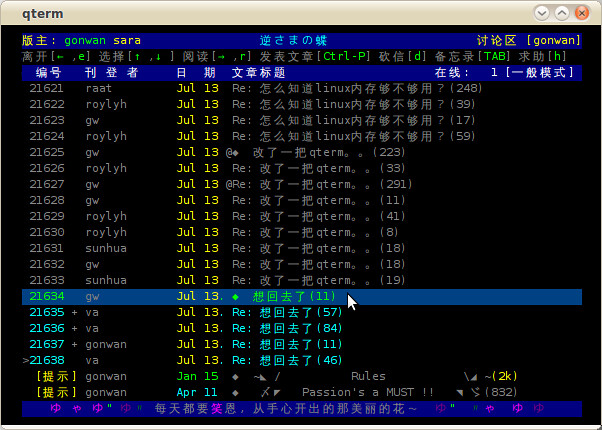In last article, we defined a fundamental type. But nothing can be done with it. Now, we will extend it to be a classed type, say adding class info into our fundamental type. To do this, we should define a class struct, which can be regard as the meta info of a C++ class:
NOTE: PLEASE READ ALL COMMENT CAREFULLY.
|
1 2 3 4 5 6 7 8 9 10 11 12 |
typedef struct _FooClass { /* * Official document: * All class structures must contain as first member a GTypeClass structure. */ GTypeClass parent; /* * Since glib 2.24, there're new functions to keep privacy. */ int i; void (*bar)(); } FooClass; |
GTypeClass should be the first member of a class struct. You can image the i field to be the version of the class. And we can add a string field to hold the author of this class. There’s also a function pointer bar(). As you may already know, it is used to implement polymorphism, which can be regard as virtual function of a C++ class.
When registering our fundamental type, additional field in GTypeInfo and GTypeFundamentalInfo are filled:
|
1 2 3 4 5 6 7 8 9 10 11 12 13 14 15 16 17 18 19 20 21 22 |
GType foo_get_type() { static GType foo_type = 0; if (foo_type == 0) { static const GTypeInfo foo_type_info = { sizeof(FooClass), /* class_size */ NULL, /* base_init */ NULL, /* base_finalize */ (GClassInitFunc)foo_class_init, /* class_init */ NULL, /* class_finalize */ NULL, /* class_data */ 0, /* instance_size */ 0, /* n_preallocs */ NULL, /* instance_init */ NULL /* value_table */ }; /* G_TYPE_FLAG_CLASSED: Indicates a classed type */ GTypeFundamentalInfo foo_type_fundamental_info = { G_TYPE_FLAG_CLASSED }; foo_type = g_type_register_fundamental(g_type_fundamental_next(), "FooClassedFundamentalType", &foo_type_info, &foo_type_fundamental_info, 0); } return foo_type; } |
GTypeInfo is the key data structure of GObject type system. It defines how a classed type should be initialized and finalized. Here, we just assigned the class_init() callback. It is called when our FooClass needs initialization. For fundamental and static types, their class_finalize() are never called. We will demo the usage of this callback when introducing dynamic types. Please also note the G_TYPE_FLAG_CLASSED flag passed into GTypeFundamentalInfo struct.
Now, let’s implement our foo_class_init() function. This function is used to initialize fields and assign virtual functions in most time:
|
1 2 3 4 5 6 7 8 9 10 11 |
void foo_class_bar(); void foo_class_init(FooClass *klass, gpointer data) { klass->i = 129; klass->bar = foo_class_bar; printf("Calling foo_class_init(): i=%d\n", klass->i); } void foo_class_bar() { printf("Invoking foo_class_bar()\n"); } |
Now, we’ve finished our definition of the class struct. Let’s see how to use it:
|
1 2 3 4 5 6 7 8 9 10 |
int main() { g_type_init(); my_dump_type(foo_get_type()); FooClass *klass = (FooClass *)g_type_class_ref(foo_get_type()); klass->bar(); g_type_class_unref(klass); return 0; } |
See? We use g_type_class_ref() and g_type_class_unref() to ref/unref a class, and invoke a function. But its function is still limited. We can just get/set its meta info. It still cannot be instantiated. This will be discussed in the next article.
All source code is available in my skydrive: http://cid-481cbe104492a3af.office.live.com/browse.aspx/share/dev/TestOO. In the TestGObject-{date}.zip/TestGObject2 folder.
